Concluding the countdown of my top 40 “Star Wars” comic stories, here are my top 10:

10. “Dark Empire”
Six-issue series, 1991-92, Tom Veitch, Cam Kennedy
Kennedy’s gorgeous artwork paints Dark Horse’s debut “Star Wars” series as darker than my usual tastes, but I like the idea that the New Republic will never be stable until it has the foundation of a new Jedi Order. This is the series where Luke comes to that realization. Amid tight plotting, film-style action and sparkling dialog, Veitch introduces several key EU elements. My favorite is the Jedi Holocron, essentially a search engine of Jedi history. Secondly, I enjoy the detour to Han’s homeworld, the Smuggler’s Moon Nar Shaddaa, where Boba Fett returns with the most famous line in “Star Wars” comics history: “The Sarlacc found me somewhat indigestible, Solo.” Thirdly, I like the notion of the Deep Core Worlds, including the resurrected Emperor’s creepy throne world of Byss.
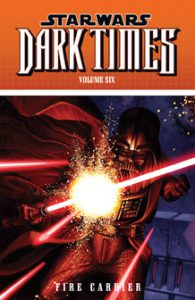
9. “Fire Carrier”
“Dark Times” Issues 23-27, 2013, Randy Stradley, Gabriel Guzman
By this point, “Dark Times” had established itself as having a big heart due to its makeshift families – including the younglings under Jedi Master K’Kruhk’s charge – but also a dark underbelly, as we see the galaxy’s grimmest depredations. Here, the Arkinnea militia, in a parallel to Nazi Germany, hauls refugees to the promise of settlements in the north via an ore hauler. It empties the bottom hatches, dropping refugees to their deaths on the rocks below. Against this harrowing backdrop, Stradley explores noble Imperial officers such as Commander Teron, who helps fund and supply K’Kruhk’s makeshift Jedi academy. After a few years of Teron supplying seeds every spring as promised, K’Kruhk’s group doesn’t hear from him again. It’s a poignant epilogue.
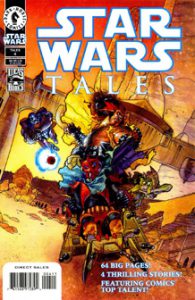
8. “A Death Star Is Born”
“Star Wars Tales” Issue 4, 2000, Kevin Rubio, Lucas Marangon
“Tales” beat “Family Guy” to the joke by seven years in this imagining of a budget meeting for the Death Star. The Emperor wonders if safety rails around the various bottomless pits would be too much to ask. Director of operations Tol Sivron says, “It’s not too much to ask, as long as you don’t mind an overall budget increase of 36 percent.” The Emperor replies: “Oh, in that case, I’ll just be careful.” Along with quick little jokes like Tarkin choking not from Vader’s Force choke but rather because his coffee goes down the wrong pipe, “A Death Star Is Born” is a 12-page comedic gift to fans who know “A New Hope” inside and out.

7. “The Warrior Princess”
“X-Wing: Rogue Squadron” Issues 13-16, 1995-96, Michael Stackpole and Scott Tolson, John Nadeau
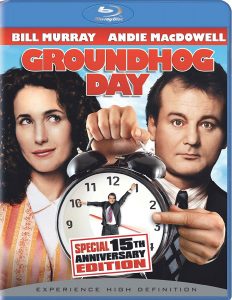
Leia was a princess-turned-warrior; Rogue Squadron pilot Plourr is a warrior-turned-princess, and naturally there’s humor to be mined. But mostly it’s a dramatic yarn as the gruff Plourr returns to her mantle as princess of Eiattu in an attempt to stave off civil war. It’s fascinating to see Plourr navigate the morass of Eiattu alliances, especially when it seems she’s on the wrong side. We also meet compelling new Rogues, notably female Calamari Ibtisam and male Quarren Nrin, rivals-turned-friends; and the small-but-brutal Imperial villain Leonia Tavira (later to appear in the novel “I, Jedi”).

6. “Ulic Qel-Droma and the Beast Wars of Onderon”
“Tales of the Jedi” Issues 1-2, 1993, Tom Veitch, Chris Gossett
Although it takes place 4,000 years prior to “A New Hope,” we see Jedi Masters and apprentices, lightsabers, lightspeed travel and a galactic government. At the same time, “TOTJ” feels historic, and it’s Gossett’s drawings that provide this fascinatingly ancient feel. The ships and architecture — such as Onderon’s walled city of Iziz and the Beast Riders’ forest fortress — are rich works of art. The beiges, browns, yellows and oranges from colorist Pamela Rambo add to the feel of a bygone era because those are the hues we associate with ancient Egypt. Veitch, who talked with Lucas before embarking on “Tales of the Jedi,” wrote a story that holds up beautifully despite all the new material since ’93.
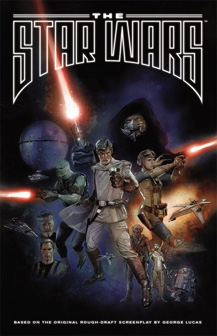
5. “The Star Wars”
Eight-issue series, 2013-14, J.W. Rinzler, Mike Mayhew
We had gotten a taste of George Lucas’ early “Star Wars” drafts in “The Annotated Screenplays” and Rinzler’s “Making of” books, but this comic brings the rough draft to vibrant life. Rinzler adds and subtracts dialogue for the sake of clarity, but mostly — fitting with the historical purpose of the project — he leaves the flaws and oddities in place. For example, an Aquilae snubfighter pilot is named Chewie, and later in the story, we meet the Wookiee Chewbacca, nicknamed “Chewie.” The first thing that jumps out is that Lucas thinks in terms of action sequences first, and considers plot, character and theme as secondary concerns. Many familiar sequences are in the rough draft, but the overall plot does not link together in a tight filmic structure. Still, it’s remarkable how many of these sequences could be copied and pasted into later scripts, so obviously there was something to all of this from the beginning.
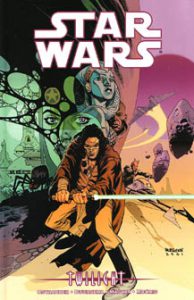
4. “Twilight”
“Republic” Issues 19-22, 2000, John Ostrander, Jan Duursema
Ostrander makes his spectacular “Star Wars” debut, launching the Quinlan Vos/Aayla Secura saga that will be the heart of “Republic,” Dark Horse’s longest-running “Star Wars” series. Vos makes for a fascinating way to approach the light-side/dark-side conflict. When we meet him, he has amnesia. Because he does not remember the Jedi code, he’s prone to tiptoe into the dark side as he seeks his answers. Still, when Mace Windu puts him on the spot, Quin acknowledges that he does answer to his inner morality. The wickedly grinning Devaronian Vilmarh “Villie” Grahrk is less morally driven yet strangely endearing. Every decision he makes is based on money. If he has a bet that Quinlan will not get off a planet alive, he’ll try to kill him. If he has a bet that Quin will survive, there’s no better ally than Villie.
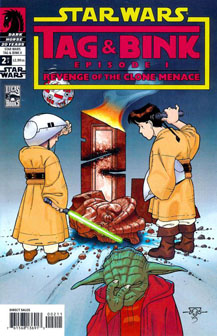
3. “Tag & Bink Episode I: Revenge of the Clone Menace”
2006, Kevin Rubio, Lucas Marangon
They’re all great, but the prequel issue is the funniest of the four issues chronicling the GFFA’s answer to Rosencrantz & Guildenstern. Young Tag, blessed with Corellian suaveness, hides around corners with Bink at the Naboo lake house in “Attack of the Clones” and helps Anakin say the right things to woo Padme. Padme: “We’d be living a lie. I couldn’t do that. Could you, Anakin? Could you live a lie?” Tag (whispering to Anakin): “Now dude, trust me. Agree with her, and then turn and walk away real cool, like you don’t really need her.” Anakin: “No, you’re right. It would destroy us.” Padme (as the scene extends beyond the film): “Anakin, wait!” (She pulls Anakin into a deep kiss.) Bink: “That’s amazing.” Tag: “Yeah, it’s sad, but that kinda stuff works all the time. It’s the ‘catch-and-release’ principle.”
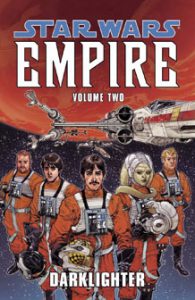
2. “Darklighter”
“Empire” Issues 8, 9, 12 and 15, 2003, Paul Chadwick, Douglas Wheatley
Writer Paul Chadwick uses the deleted Biggs scenes from “A New Hope” as building blocks to tell the full saga of Luke’s best bud. Before “Darklighter,” Biggs was in “Star Wars” mainly to symbolize the cost of war. But Chadwick makes him into a fully realized human being in a story that packs a similar emotional punch to “Episode IV” itself. Wheatley, whose art looks like paintings, deserves half of the storytelling credit as he gives cinematic pacing and kinetics to “Darklighter.” For example, a series of three small panels show Biggs and Hobbie standing stock-still until their commander departs, then a big panel on the next page finds them exploding into an argument.
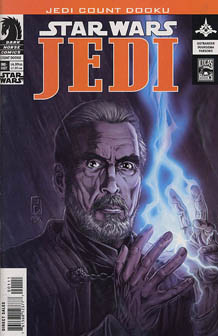
1. “Count Dooku”
“Jedi” Issue 4, 2003, John Ostrander, Jan Duursema
Dooku plays Quinlan Vos even more masterfully than Darth Sidious plays Anakin Skywalker in “Episode III” – after all, Anakin comes very close to siding with Mace Windu in that pivotal moment. But Dooku is always a safe step ahead of our hero. First, he forces Quinlan to blow his cover by threatening his relative Sheyf Tinte. “I’ve known the truth about you from the start, Quinlan Vos,” Dooku says. Then Dooku, saying “I only need to open your eyes,” tells Quinlan of Tinte’s betrayal, and he turns Quin from an undercover agent into a true minion. Or does he? The mystery of Quin’s loyalty – the best storyline from Dark Horse’s “Republic” saga — will continue to play out from here.

